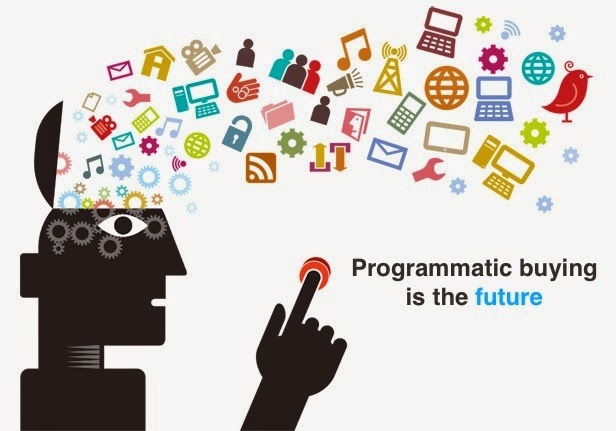If you do not have contact with the world of media and advertising you might never have heard the term programmatic. Even if you do it is likely that you have no idea what it means. To put it simply programmatic refers to a radical overhaul in the way advertising is bought and sold. Specifically, it refers to advertisers (or media agencies) being able to bid on ad positions in real time, enabling them to shift ad spend around between publishers at their own discretion.
Understandably many people in the publishing industry are very nervous about this. Advertising has historically been a very closed game, publishers have demanded high premiums for ad spaces that they could provide very little justification for. The digital age has forced them to compete with bloggers, app developers and a multitude of other Internet services that all require ad revenue to survive.
Programmatic began with the rise of text based search ads. Innovators like DoubleClick honed in on the idea that advertisers should be able to pay for what they want (a click), and the AdServer should be able to calculate expected returns for all possible ad-units by looking at the historical click through rate for each ad-unit and the amount being bid. The idea soon moved to display advertising to allow advertisers to bid a fixed cost per thousand ad impressions for display ads (designed for brand awareness more than attracting clicks). Those ideas have now spawned an industry that contains thousands of technology providers and ad networks. All the Ad space from the biggest publishers in the world down to the most obscure bloggers are all available to be bought and sold across a range of different bidding platforms.
Exactly the same thing is starting to happen with digital radio stations and it is coming for billboard displays as well. Some of the new crop of music distribution channels (like Spotify and Pandora) will be rolling out products that allow them to coordinate audio ads and display ads within their apps. Behind the scenes they are developing technology to schedule these things like an online banner ad, and once that happens selling those slots in an online bidding auction that combines audio and display is not far away.
The video ads you see on YouTube and many other publisher sites are already able to be bought this way using tools like TubeMogul. In the not too distant future people will be watching ads on their televisions that are being placed there by the bidding actions of a media buying specialist. US based Ad tech company Turn is already investigating this possibility. Sure there will be latency problems, video and audio are large files, so they will need to be uploaded to an adserver close to where they will be delivered. But these technologies are already being developed to cope with the increasing complexity of display ads with rich media capability.
The rise of programmatic advertising is changing what it means to be a media agency. It is no longer sufficient to build monopoly relationships with publishers and then employ a suite of young professionals who build relationships with brands. Instead, media agencies need a room full of a new kind of media geek that specializes in understanding how to buy media on a variety of platforms called Demand Side Platforms (DSPs).
These new divisions within agencies are called trading desks, they are staffed with people whose job it is to understand all the kinds of media that are available to buy, how much you can expect to pay for it, and what kinds of ads will work where. It is a new job, and to be perfectly honest people still have a lot to learn. That learning curve will only increase, at the moment they are just buying display ads on desktop and mobile. The ad capabilities of mobile will increase as the field matures, and then they will have to deal with buying video advertising and audio. At some point that will spread beyond just YouTube, first to other online video services, then to smaller niche digital TV channels, then to set-top boxes and cable TV. Finally, broadcast television (if it is still in business) will grudgingly accept that they need to make their inventory available.
Before any of this happens, most of the advertising on social networks will have become available programmatically. Facebook is making this transition, and twitter will follow, as will the others. They will each struggle with the balance of keeping their unique ad formats and maximizing the return on their inventory. Everything we have seen in desktop display indicates that this problem can be solved with online auctions, which means fully programmatic social media is coming.
This is an awe inspiring future for digital advertising. The DSP of the far future will be a tool that is able to buy inventory on desktop, mobile web, mobile apps, radio stations, TV channels, electronic billboards and a suite of social media. Ideally it will contain rules that allow the purchase of media between these channels to be co-ordinated and optimized in real time.
For example, imagine a system with configuration rules that allow TV time to be purchased when twitter activity for certain key hashtags reaches threshold volumes (an independent way of checking that TV viewership is what the networks claim it is). Following that with social media advertising, and digital billboards the following morning during the daily commute. The possibilities for marketers to test and learn what actually works will be immense.
When you contemplate the possibilities for investigating and improving ROI using this approach to media planning and spending you really need to ask yourself:
Why would anyone buy advertising the old fashioned way?
